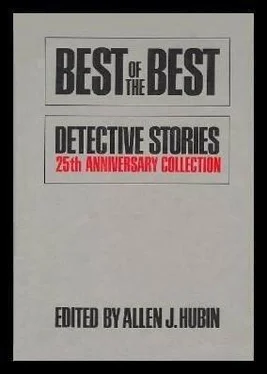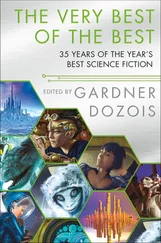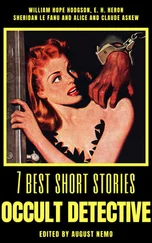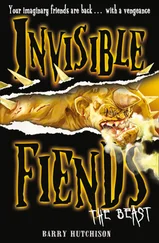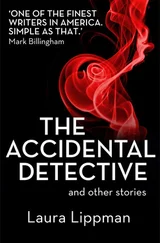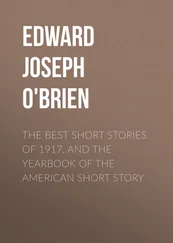Stephen Barr - Best of the best detective stories - 25th anniversary collection
Здесь есть возможность читать онлайн «Stephen Barr - Best of the best detective stories - 25th anniversary collection» весь текст электронной книги совершенно бесплатно (целиком полную версию без сокращений). В некоторых случаях можно слушать аудио, скачать через торрент в формате fb2 и присутствует краткое содержание. Город: New York, Год выпуска: 1971, ISBN: 1971, Издательство: E.P. Dutton & Co., Жанр: Детектив, на английском языке. Описание произведения, (предисловие) а так же отзывы посетителей доступны на портале библиотеки ЛибКат.
- Название:Best of the best detective stories: 25th anniversary collection
- Автор:
- Издательство:E.P. Dutton & Co.
- Жанр:
- Год:1971
- Город:New York
- ISBN:978-0-525-06450-3
- Рейтинг книги:5 / 5. Голосов: 1
-
Избранное:Добавить в избранное
- Отзывы:
-
Ваша оценка:
- 100
- 1
- 2
- 3
- 4
- 5
Best of the best detective stories: 25th anniversary collection: краткое содержание, описание и аннотация
Предлагаем к чтению аннотацию, описание, краткое содержание или предисловие (зависит от того, что написал сам автор книги «Best of the best detective stories: 25th anniversary collection»). Если вы не нашли необходимую информацию о книге — напишите в комментариях, мы постараемся отыскать её.
Best of the best detective stories: 25th anniversary collection — читать онлайн бесплатно полную книгу (весь текст) целиком
Ниже представлен текст книги, разбитый по страницам. Система сохранения места последней прочитанной страницы, позволяет с удобством читать онлайн бесплатно книгу «Best of the best detective stories: 25th anniversary collection», без необходимости каждый раз заново искать на чём Вы остановились. Поставьте закладку, и сможете в любой момент перейти на страницу, на которой закончили чтение.
Интервал:
Закладка:
“No. If George Washington, who was not merely the living symbol of all this but carried with him that extraordinary compulsion toward numbers which characterized his whole temperament besides, had wished to plant a number of oak trees to commemorate a birthday visit in the year 1791... he would have, he could have, selected only one number out of all the mathematical trillions at his command — the number thirteen .”
The sun was looking over the edge of Pennsylvania at Washington’s Grove.
“George Washington planted thirteen trees here that day, and under one of them he buried Paul Revere’s copper case. Twelve of the trees he arranged in an equilateral triangle, and we know that the historic treasure was not under any of the twelve. Therefore he must have buried the case under the thirteenth — a thirteenth oak sapling which grew to oakhood and, some time during the past century and a half, withered and died and vanished, vanished so utterly that it left no trace, not even its roots.
“Where would Washington have planted that thirteenth oak? Because beneath the spot where it once stood — there lies the copper case containing his sword and the first coin to be struck off in the new United States.”
And Ellery glanced tenderly at the cherry sapling which Tobias Clarke had set into the earth in the middle of Washington’s Grove six years before.
“Washington the surveyor, the geometer, the man whose mind cried out for integral symmetries? Obviously, in only one place: In the center of the triangle. Any other place would be unthinkable.”
And Ellery hefted Tobias’s ax and strode toward the six-year-old tree. He raised the ax.
But suddenly he lowered it, and turned, and said in a rather startled way: “See here! isn’t today...?”
“Washington’s Birthday,” said Nikki.
Ellery grinned and began to chop down the cherry tree.
~ ~ ~
From the 1949 anthology...
Q. Patrick appeared quite frequently in the periodicals of the forties and fifties, most notably in Ellery Queen’s Mystery Magazine , and his generally excellent tales should be collected on their own. Lieutenant Timothy Trant was a favorite Patrick protagonist in those years, appearing in many of his novels and short stories, several of which have appeared in this series. “Murder In One Scene” turns on an idea not unknown elsewhere in crime fiction — a man accidentally learns of the impending violent death of a stranger — but rarely has it had such adroit handling as here.
Q. Patrick
Murder in One Scene [4] Copyright 1948 by the United Newspapers Magazine Corp. Reprinted by permission of the authors.
Lieutenant Trant of the New York Homicide Bureau was dawdling over breakfast in his pleasant apartment. He buttered a piece of brioche and glanced at the three letters which had come in the mail.
They didn’t look interesting. One was from his mother in Newport. He opened it and read Mrs. Trant’s usual garrulous account of her social life with its usual undercurrent of pained surprise that her son should choose to be a New York policeman pursuing murderers when he might be escorting the toniest dowagers through the best drawing rooms of the Eastern seaboard.
The second letter came from a Princeton classmate who was starting a cultured magazine and thought Trant might like to sacrifice five hundred dollars on the altar of Art.
The third was even less promising. The long envelope bore his name and address in type and, on its left hand top corner, the printed words: Big Pal . Trant knew the organization. It was a worthy one which found sponsors for delinquent boys on parole. Lieutenant Trant, who preferred his criminals delinquent rather than rehabilitated, had no great desire to become a Big Pal. He slit the envelope, anticipating the printed plea beginning: Dear Friend ...
But the envelope did not contain the usual form letter. Inside was a folded sheet of elegant blue stationery. Lieutenant Trant blinked. He unfolded the sheet and looked at what was written on it. He blinked again.
Beneath an embossed Park Avenue address had been written in a round feminine hand:
“Dear George:
“Since you insist, come at five tomorrow. But this is to warn you. I shall have Eddie there. I have also bought a gun. If you try what you tried last time, I will use it.
“Marna.”Lieutenant Trant, whose passion for the unorthodox was unbridled, smiled happily. Offhand he could think of nothing less orthodox than the arrival of so personal and interesting a communication in the envelope of an impersonal and unexciting charitable organization.
He realized that a mistake must have been made with envelopes. Appeals are usually sent out by volunteer ladies who have been given a sucker list and envelopes and who salve their social consciences by typing addresses and providing stamps. This particular volunteer lady — this unknown Marna — must have been very absent-minded or very jittery.
Judging by the nature of the letter she had mailed in the wrong envelope, she had been very jittery.
Trant looked at the date. It had been written the day before. “Five tomorrow” therefore meant five o’clock that afternoon. He let his thoughts toy pleasingly with a picture of the jittery Marna with her gun and Eddie waiting at five for the mysterious George who might “try” again what he had “tried” last time.
It was, of course, his duty as an officer of the law to investigate what might prove to be a very antisocial encounter.
He put the envelope and the letter in his pocket.
He was humming as he left his apartment...
A few minutes before five Lieutenant Trant, in an elegantly inconspicuous gray suit, arrived at the house whose address appeared at the head of Mama’s letter. Although the house had a Park Avenue number, its door was on a side street. It was an old private residence which had been converted into apartments.
Since he did not know Mama’s name, he stepped into the small outside hall and studied the names above the door buzzers. There was no Marna anything. Most of the names were discouraging. But above the buzzer of the penthouse apartment were two printed cards. One said: Miss Joan Hyde . The other said: Mrs. George Hyde .
Marna could be Mrs. George Hyde. That would make her the wife of the potentially sinister George. Miss Joan Hyde might be her daughter. Lieutenant Trant was disappointed. Romantic about mystery and the possibly mysterious, he had imagined Marna blonde, beautiful — and young.
He was about to press the Hyde buzzer when a girl came in from the street behind him and, fumbling through her pocketbook, brought out a key and opened the door. She glanced at him questioningly and kept the door half open. He smiled and followed her into the house.
The girl had started through the neat mirrored hallway toward a self-service elevator, but she stopped and turned back to him a little suspiciously.
“Are you looking for someone?”
She was young and pretty with shining dark hair, cool eyes and a sort of lazy self-assurance which went with the silver fox coat she was wearing.
How nice, thought Lieutenant Trant, if Marna had looked like that.
He said: “As a matter of fact, I’m looking for Marna Hyde.”
“Oh.” She smiled. “How interesting.”
“Is it?”
“To me it is.” She moved to the elevator. “I’ll take you up.”
Lieutenant Trant got into the elevator, too. The girl’s perfume was pleasant. As she made the elevator ascend, she glanced at him sidewise.
“Don’t say Mama’s got herself a new beau.”
“Do I look like a beau?”
“Very. But I wouldn’t have thought Marna’d have the energy to take on a new man — what with George to get rid of and the faithful Eddie hovering.”
Читать дальшеИнтервал:
Закладка:
Похожие книги на «Best of the best detective stories: 25th anniversary collection»
Представляем Вашему вниманию похожие книги на «Best of the best detective stories: 25th anniversary collection» списком для выбора. Мы отобрали схожую по названию и смыслу литературу в надежде предоставить читателям больше вариантов отыскать новые, интересные, ещё непрочитанные произведения.
Обсуждение, отзывы о книге «Best of the best detective stories: 25th anniversary collection» и просто собственные мнения читателей. Оставьте ваши комментарии, напишите, что Вы думаете о произведении, его смысле или главных героях. Укажите что конкретно понравилось, а что нет, и почему Вы так считаете.
